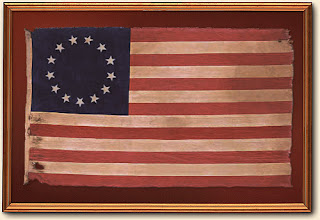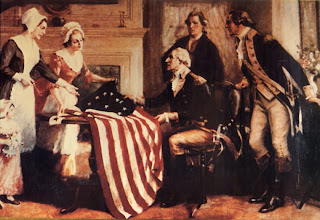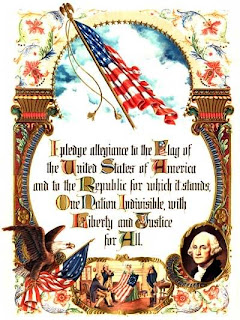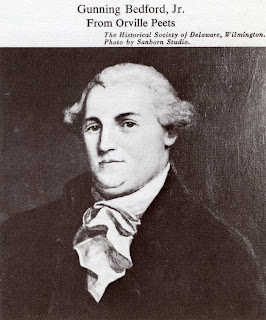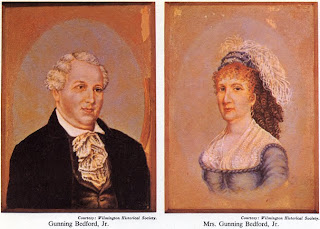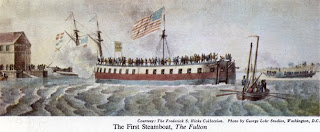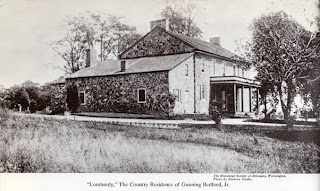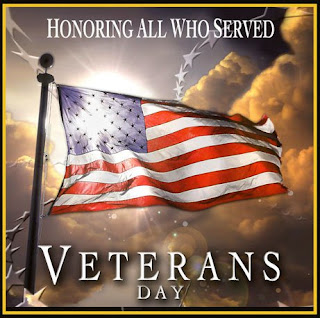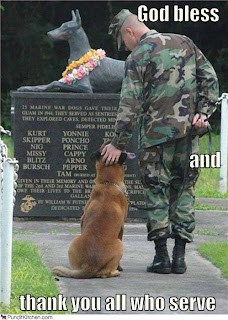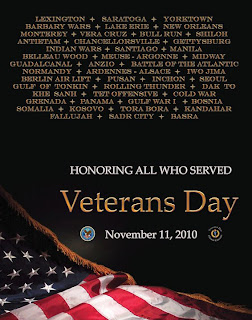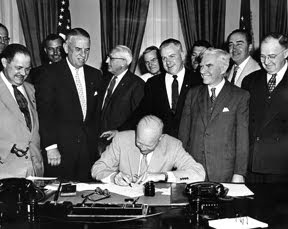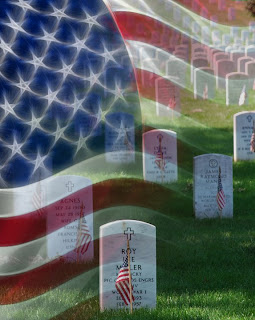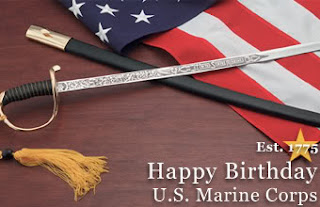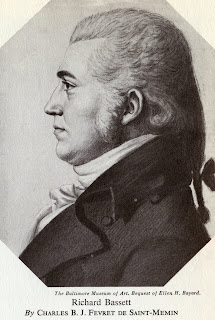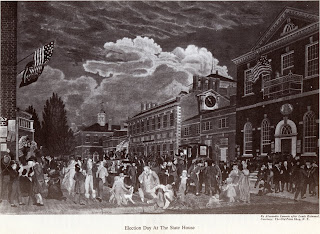
The United States Flag is the third oldest of the national standards of the world; older than the Union Jack of Great Britain or the tricolor of France. "Old Glory" was first authorized by Congress June 14, 1777. This date is now celebrated throughout the Nation by the observation of Flag Day.
The flag, which had 13 stripes alternations red and white representing the 13 states and the rectangular blue field with 13 white stars forming a circle within it was a development of several flags, which had been used in early Revolutionary battles. It was first decreed that there should be a star and stripe for the early state, making 13 of both; for the States, at that time, had just been formed from the original 13 colonies. The colors of Old Glory may be thus explained:
The red for valor, zeal and fervency; white for hope, purity, cleanliness of heart and rectitude of conduct; the blue, the color of the sky, epitomizing heaven for reverence to God, loyalty, sincerity, justice and truth.
The stars (an ancient symbol of India, Persia and Egypt) symbolize dominion and sovereignty, as well as loyal aspirations. The constellation of the stars within the Union, one star for each State, is emblematic of our Constitution, which leaves to the States their individual sovereignty except as to rights specifically delegated to the Federal government.
Old Glory is said to have been flown for the first time on June 15, 1777, near Bound Brook, New Jersey, over Washington's Headquarters and to have been first under fire in the Battle of Oriskany, August 6, 1777. It first flew over foreign territory on January 28, 1778 at Nassau, Bahama Islands, Fort Nassau having been captured by the Americans in the War of Independence. The first foreign salute to the flag was offered by the French Admiral LaMotte Piquet off Quiberon Bay, February 13, 1778.
In 1795, after admission of Vermont and Kentucky to the Union, the number of stars and stripes was raised to 15. As other states were admitted to the Union during the next few few years it became impractical to add both stars and stripes. Congress, therefore, passed an act on April 14, 1818, restoring the 13 alternate red and white stripes as representing the 13 original states and provided for addition of one star for each state upon its admission to the Union.
The last addition to the American flag was made July 14, 1912, when two stars were added---one for Arizona and one for New Mexico---bringing the number to 48. Of course since than there have been 2 more stars added with Alaska and Hawaii entering the Union.
As the manner in which the stars were to be arranged in a Blue field was not decided by Congress. It was determined jointly by the Secretary of Defense and the Secretary of the Navy with the approval of the President of the United States.
The name "Old Glory" was given to our national flag August 10, 1831, by Captain Wm. Driver of the Brig Chas. Doggett.
Old Glory symbolizes national independence and popular sovereignty. It is not the flag of a reigning family or royal house but of a hundred million free people welded into a nation, one and inseparable, united not only by community of interest but by vital unity of sentiment and purpose; a nation distinguished for the clear individual conception of its citizens alike of their duties and their privileges, their obligations and their rights.
Old Glory incarnates for all mankind the spirit of Liberty and the glorious ideal of human freedom; not the freedom of unrestrained or the liberty of license, but a unique ideal of equal opportunity for life, liberty and the pursuit of happiness, safeguarded by the stern and lofty principles of duty, of righteousness and of justice and attainable by obedience to self-imposed laws.
Floating from the lofty pinnacle of American idealism, it is a beacon of enduring hope, like the famous Bartholdi Statue of Liberty enlightening the world, to the oppressed of all lands. it floats over a wondrous assemblage of people from every racial stock of the earth whose united hearts constitute and indivisible and invincible force for the defense and succor of the down-trodden.
Old Glory embodies the essence of patriotism. its spirit is the spirit of the American nation. Its history is the history of the American people. Emblazoned upon its folds in letters of living light are the names and fame of our heroic dead, the Fathers of the Republic who devoted upon its altars their lives, their fortunes and their sacred honor. Twice told tales of national honor and glory cluster thickly about it. Ever victorious, it has emerged triumphant from nine great national conflicts. it flew at Saratoga, at Yorktown, at Palo Alto, at Gettysburg, at Manila Bay, at Chateau-Thierry at Mount Suribachi. It bears witness to the immense expansion of our national boundaries, the development of our natural resources and the splendid structure of our civilization. It prophesies the triumph of popular government of civic and religious liberty and of national righteousness throughout the world.
Old Glory first rose over thirteen states along the Atlantic seaboard with a population of some three million people. Today it flies over fifty states, extending across the continent and over great islands of the two oceans; and over two hundred eighty million owe it allegiance. It has been brought to this proud position by love and sacrifice. Citizens have advanced it and heroes have died for it. it is the sign made visible of the strong spirit that has brought liberty and prosperity to the people of America. It is the flag of all of us alike. Lets remember it and accord it honor and loyalty.
First Stars and Stripes, 1777
For over a year after the signing of the Declaration of Independence, the United States did not have an official flag. Meeting in Philadelphia in June, the Continental Congress declared: "Resolved that the flag of the United States be 13 stripes alternate red and white, that the union be 13 stars white in a blue field representing a new constellation."
No guidelines, however, were provided for the arrangement of the stars, and an amazing number of variations were created. Perhaps the most popular was to arrange the stars in a circle or wreath.
Credit for this design is usually--and mistakenly--given to Betsy Ross. In fact, no clear author of the "first" American flag can be identified, and the Betsy Ross legend was created by the grandson nearly 100 years after the Congressional resolution. Francis Hopkinson represented New Jersey in the Continental Congress, signed the Declaration of Independence and designed seals for various departments of the government and may well have designed the first flag.
Betsey Ross and the first Stars and Stripes
Although there are many conflicting stories regarding this popular picture, it depicts a woman named Betsey Ross, who at the request of a committee headed by George Washington, designed the first authorized American Flag. The first flag had 13 stars symbolizing the thirteen states of the new Republic. Each color in the flag has a specific meaning: red is for hardiness and courage, white for purity and innocence, and blue for vigilance.
The flag, especially the stars and stripes, symbolizes the loyalty and patriotism of the citizens towards their country. The cloth itself signifies little, but the flag as a symbol of the Republic stands for all of the united hopes of the American people, and has become a symbol throughout the world of the desire of all peoples of the world to be free of the yoke of government oppression.
Rare 13 Star Civil War Period Flag
“U” For Union Configuration
American
1861-1865
Rare and Beautiful 13 Star, Civil War Period Flag With A Perimeter Of Stars That Form The Letter “U” For “Union.” Entirely Hand-Sewn And In A Rare Small Size, 1861-1865:
13-star American national flag of the Civil War period (1861-65), entirely hand-sewn and with an exceptionally rare and interesting configuration of stars, the outer perimeter of which forms the letter “U”. Given the date of its making it can be assumed that this stood for “Union”.
The stars of the flag are quite large compared to most 13 star flags of this period, and point in various directions on their vertical axis. This adds one more folk quality to an already fantastic design. Adding to its desirability is the flag’s extremely small size when compared to others of sewn (versus printed) construction that were made during the 19th century, most of which measure between 8 and 20 feet on the fly.
While this flag has no known specific history, both its size and the manner of its making suggest that it may well have seen maritime use, flown from either the stern of a small craft or the pilot house of a larger boat. It wasn’t customary to fly a flag this small in scale, but examples of this size are sometimes encountered and I have always assumed that they existed due to the special request of a ship’s captain or some other high ranking officer.
Flags that have stars that create anything other than a geometric design are extremely rare and highly sought after by flag enthusiasts. A couple of stars patterns are known that actually spell something with numbers or letters, such as two varieties of printed parade flags, one of which has stars arranged to form “1876 - 1776” in celebration of our nation’s centennial of independence and the other that forms the word “FREE” to promote the end of slavery. Very few sewn flags are known that have stars that spell any such thing, but of the few that do, three examples are known that use 44 stars to spell “U.S.” and another is presumed to form the same two letters, although crudely, with 13 stars. A single 48 star example also exists which has stars that spell out “U.S.A.”.
In addition to the above examples, I have seen a handful of Civil War era flags that have a perimeter of stars that forms a “U”, like this flag, although in different fashions. One of these has a single center star, surrounded by a wreath of stars, all of which are contained within a curve of stars that forms the letter “U”. Another of these has 33 stars and contains an arch that was either intended to be a tombstone, a doorway, or the letter “U”. Those two one-of-a-kind examples are both of sewn construction, but there is also a variety of printed parade flag that has 36 stars with an outer perimeter that forms a “U”. One 34-star example and two or three 36 star examples have surfaced with this star pattern, variations of which also exist in 38 and 42 star parade flags.
Of the aforementioned variations, however, only six in total are sewn examples. This circumstance, accompanied by the fact that the flag is entirely hand-sewn, plus its general overall visual impact and very desirable, small size, make it one of the best Civil War era flags of its kind that I have ever offered for sale.
13 star flags have been used throughout our Nation’s history for a variety of purposes. The U.S. Navy used the 13 star count on small boats, not only in the 18th century, but throughout much or all of the 19th century, particularly the second half. This practice ended in 1916 following an executive order from President Woodrow Wilson. Some private ships also used 13 star flags during the same period as the Navy, and the use of yachting ensigns with a wreath of 13 stars surrounding an anchor, which began in 1848, still persists today. Among other uses, 13 star flags were carried by soldiers during the Mexican and Civil Wars and displayed at patriotic events, including Lafayette’s visit in 1825-26, the celebration of the Nation’s Centennial in 1876, and the Sesquicentennial in 1926.
Construction: The cotton-muslin stars of the flag are hand-sewn and single-appliquéd. This means that they were applied to one side of the canton, then the blue fabric was cut from behind each star, folded over, and under-hemmed, so that one appliquéd star could be visible on both sides of the flag. While some flag enthusiast have pointed to this construction method as a way of conserving fabric and cutting corners (not having to sew another star to the other side), others suggest that the real purpose was to make the flag lighter in weight. I believe it to be a function of all of the above and I always find single-appliquéd stars more interesting for two reasons; one, because they are more visually intriguing and two, because when executed properly they serve as evidence of a more difficult level of seam-work and stitchery., meaning that they are applied to both sides of the blue canton. The canton and stripes are hand sewn of wool bunting and there is a fine linen sleeve with two whipped-stitched grommets.
